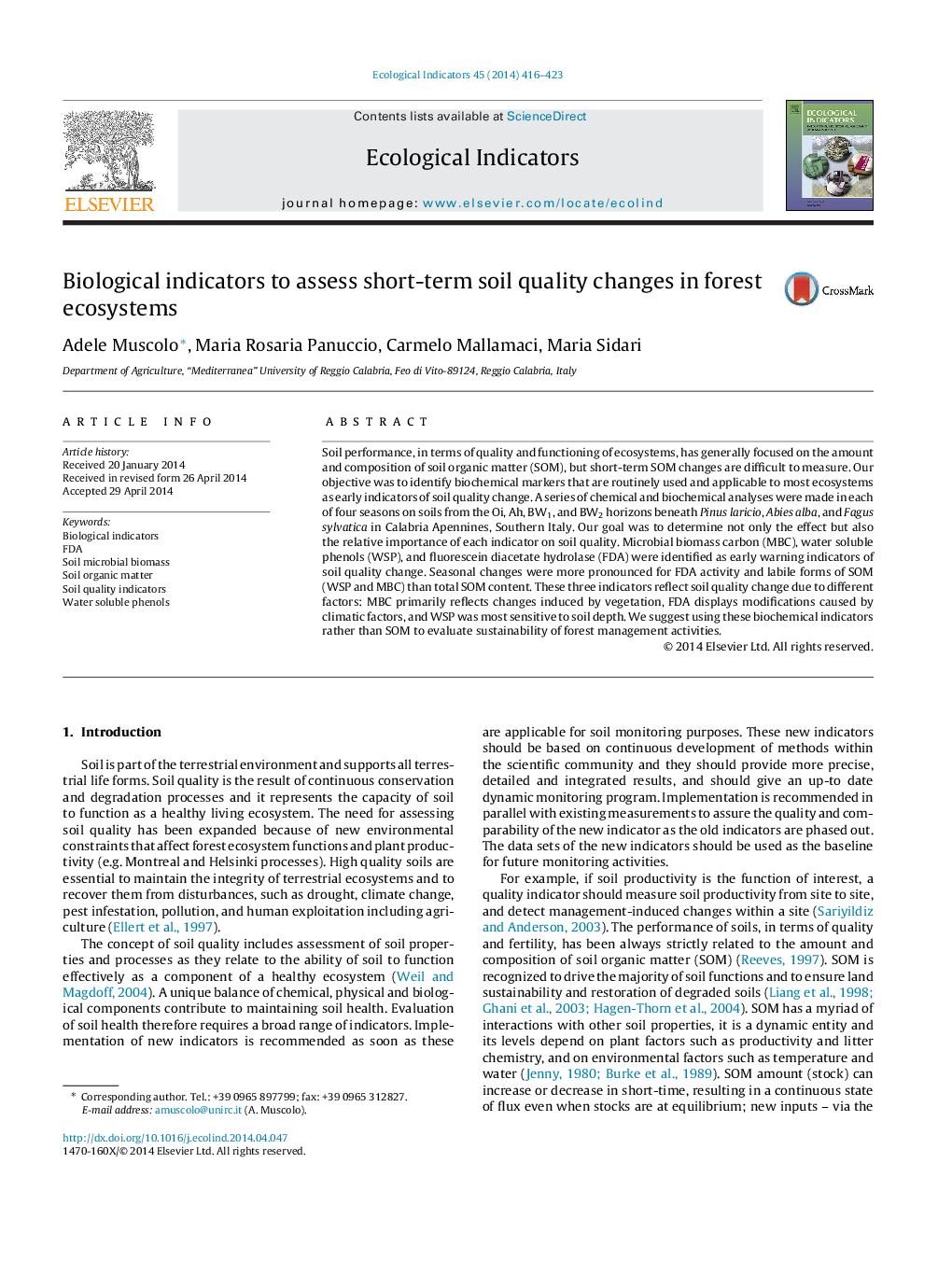| Article ID | Journal | Published Year | Pages | File Type |
|---|---|---|---|---|
| 4373083 | Ecological Indicators | 2014 | 8 Pages |
•We identified biochemical markers to be used as indicators of changes in soil quality.•We identified MBC, WSP, FDA as early indicators of soil changes.•MBC changes were induced by vegetation, WSP was sensitive to soil depth.•FDA variations were caused by climatic factors.•The identified indices are useful to assess the sustainability of forest ecosystem functioning.
Soil performance, in terms of quality and functioning of ecosystems, has generally focused on the amount and composition of soil organic matter (SOM), but short-term SOM changes are difficult to measure. Our objective was to identify biochemical markers that are routinely used and applicable to most ecosystems as early indicators of soil quality change. A series of chemical and biochemical analyses were made in each of four seasons on soils from the Oi, Ah, BW1, and BW2 horizons beneath Pinus laricio, Abies alba, and Fagus sylvatica in Calabria Apennines, Southern Italy. Our goal was to determine not only the effect but also the relative importance of each indicator on soil quality. Microbial biomass carbon (MBC), water soluble phenols (WSP), and fluorescein diacetate hydrolase (FDA) were identified as early warning indicators of soil quality change. Seasonal changes were more pronounced for FDA activity and labile forms of SOM (WSP and MBC) than total SOM content. These three indicators reflect soil quality change due to different factors: MBC primarily reflects changes induced by vegetation, FDA displays modifications caused by climatic factors, and WSP was most sensitive to soil depth. We suggest using these biochemical indicators rather than SOM to evaluate sustainability of forest management activities.
Graphical abstractFigure optionsDownload full-size imageDownload as PowerPoint slide
